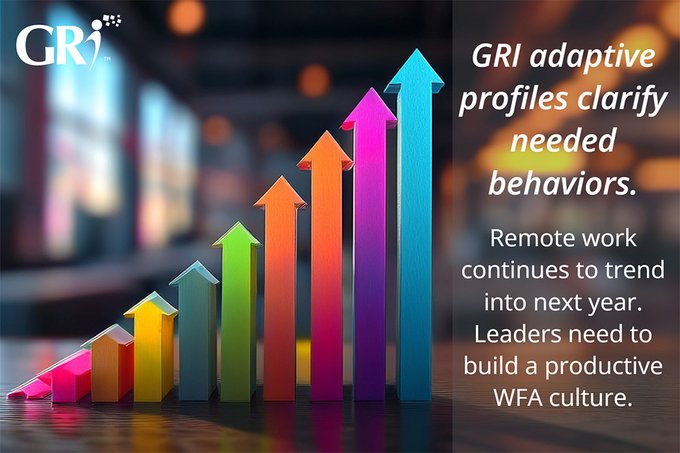The Art and Science of Managing People
Posted by Frederic Lucas-Conwell

The Art and Science of Managing People
Gabriel, CEO of a fast-growing tech company in Silicon Valley, is looking at the organizational chart with the CFO and Human Resources Director. Tensions at the executive level are impacting employee engagement, recruiting new talent is proving unsuccessful, and some of the key staff are leaving for other ventures. The product is promising but sales aren't meeting expectations. The three executives are examining the org chart, hoping to fix some of the people issues that are so dramatically affecting productivity and their bottom line.

But the group doesn't understand what's gone wrong, beyond a vague idea that some people didn't cut it and anyway, they couldn't have prevented the mess, or kept the "B" players from filtering in … Could they?
Whatever the explanations, directors and investors are impatient for maximum ROI, and Gabriel will be replaced soon if he and his colleagues don’t come up with an effective solution.
This scenario with Gabriel, his team, and his company, is playing out in companies everywhere.
Lack of clarity about managing people is a serious road block in the development of effective organizations.
Clear, objective information about people is to business executives what a telescope is to an astronomer: A magnifying portal to an immensity of shining stars, who, in turn, offer new business opportunities. Without the telescope it's impossible to see them clearly.
Progress in People Management Practices
Observations and surveys continue to remind us about how much remains to be done on understanding people and improving their management.
According to the Deloitte Global Human Capital Trend Report, 2014:
- 6% of those surveyed believe that their current process for managing performance is worth the time
- 58% called their process "weak", and
- North American companies were rated 20% worse than the rest of the world.
Good management practice is much too rare. Managers may be smart, experienced and powerful, but yet lack people management skills. Leadership training may boost people skills. But learning these skills takes time and is expensive, as evidenced by surveys and countless stories of even savvy moguls such as Steve Jobs.
360-degree feedback reviews are one tool, but they hide situations that may require unpopular fixes and delay creative changes and reorganization.
People Management as an Art ... and a Science
Since all that is done in organizations is done through people, clarification about them should be the ultimate goal for refinement. It may come as no surprise that people management, which should be more objective, precise and scientific, is after all more a form of art, with gut feelings and subjectivity.
If people management as an art is to improve with the help of science, executives and HR experts have to be better equipped with tools for people management activities, the same way astronomers are equipped with telescopes.
The starting point for a more scientific art is a more precise, nuanced, objective, and shared understanding of HOW individuals act, according to the goal: Better efficiency and engagement of the team.
The HOW of People and Organizations
The HOW component drives WHAT we do in different situations. Each individual has his own way, taking different routes to the same destination. The challenge is how do we describe the HOW more accurately and positively.

The WHATs can be more easily identified. They come with their observable, measurable facts. They are the world of KPIs (Key Performance Indicators) and data.
The HOW component of people's actions covers: Self-confidence, dexterity, compliance, social activities, speed, intensity level, and more. It requires a more detailed and scientific understanding.
The HOW is by nature the intangible elements, not easy to accurately observe and define. Even being observed 24/7 would not comfortably reveal its truth. The HOW is emotional. It is malleable, adaptable. It evolves. Our thoughts can act upon it, as well as our environment.
To be more objective in dealing with the HOW, there are many challenges:
- What needs to be measured
- How to measure and ease of measurement
- Validity and reliability of the measurement
- How it is learned and used
- How to represent the measurement
Since no one word representing a behavior or personality trait has exactly the same meaning for each of us, the last point is of critical importance.
When these points are addressed in a system that objectively and scientifically identifies the drives and motivations behind each individual's behavior, we end up with a clearer understanding of HOW individuals act in organizations. HOW they accomplish, think, learn about and define WHAT they do. This is where the GRI comes in.
The Benefits of Measuring and Representing Behavior

We know that our CEO, Gabriel, and his team need to be better at planning for, promoting, recruiting and organizing team members. The leaders and their employees benefit from refining their understanding of how each acts and adapts to their environment - understanding our human-hood more objectively - and how we speak about it.
Very little happens - technology, innovation, invention and economies - without human intervention. The challenge of better understanding and managing people is, and will continue to be, a top priority in all organizations, whether small or large.
But what happened with Gabriel? When a friend happened to mention the GRI and how much it helped his company, Gabriel recognized that it could be the solution he needed. Two months later they have a much clearer picture of their teams and how to motivate each employee. They lost one executive along the way, but using the GRI, they are filling their open positions with people who fit their needs more closely, and the Board is thrilled that progress is being made so quickly.
Images: 123royaltyfree.com and Growth Resources, Inc.
Latest Articles
Groupama Successful Transformation in Romania: The GRI, Catalyst for Profound Change
The history of Groupama in Romania is an eloquent testament to resilience, strategic vision, and the transformative impact of innovative management tools. Arriving at the...
Hybrid Work: A Management Revolution
The COVID-19 pandemic has acted as an unprecedented catalyst, radically transforming our approach to work. What was once a marginal practice has become the norm for many...
Leadership 3.0: Objective Insights for People-Centric Leaders
Steve, a brilliant entrepreneur, poured his heart into his work. His team at "Innovatech" was on the brink of a major breakthrough, a new app that promised to revolutionize...



